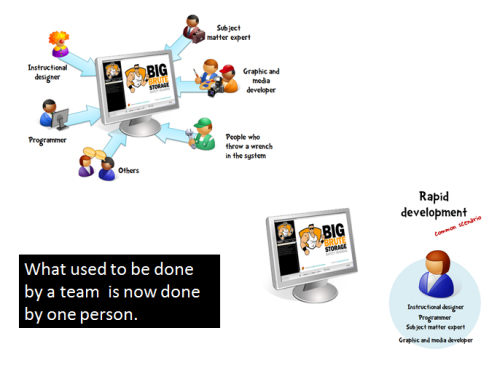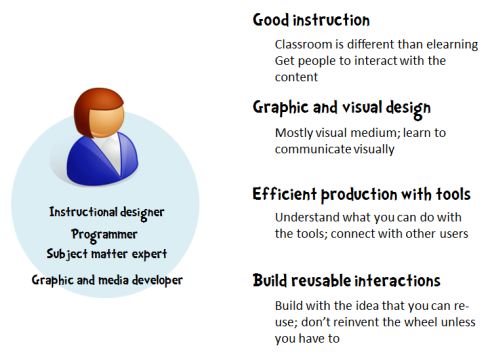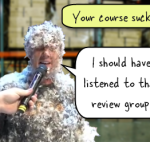
I was in London last week attending the Learning Technologies conference. It was great to meet so many blog readers and Articulate customers. During an interview at the conference I was asked about the three most common issues I see with elearning. Here are a few of my thoughts concerning those issues.
Will You Get 100% With a 50% Commitment?
There’s a big push to move content online. Usually the organizations start by converting existing classroom content into an “elearning” course. They do that with one of those easy-to-use rapid elearning tools. That part is good. The challenge though is that elearning is more than converting existing content to create online content.

Many elearning developers kind of stumbled into the field. That means they usually don’t have a lot of the skills and experience required for more than basic course design and development. Sure they get the tools to create content and put it online. However, the organizations often tend to expect a result that is greater than the investment they make to get there.
If you want a successful elearning program you have to make the appropriate investment. Purchasing software like that made by Articulate is a good first step. But the software doesn’t determine course objects and it surely doesn’t replace sound instructional design. In addition, there’s more to elearning than just instructional design. For example, where will it reside and how do users access the courses? Will it be tracked? Who analyzes the reports?

Here is a list of the types of skills required for successful elearning design and implementation. It’s not exhaustive but it does provide insight into what makes a course successful and that there are a lot of diverse requirements. This blog post on the skills you need to succeed will help flesh out some of those ideas.
Important E-Learning Skills
- Project management: coordinate the design and delivery of the elearning course
- Performance consulting: help the organization to identify the training need and recommend the best solution
- Instructional design: craft a relevant learning experience to meet the course objectives
- Graphic design: determine the visual design and develop the graphic assets
- UX design: create the user experience
- LMS/IT administrator: manage the course and access to it
- Runner: order pizza and beer
Successful online training programs require people with these types of skills and understanding of technology. And the smaller the team, the more those expectations are placed on a single person. The organization needs to do those things that lead to success. Without the appropriate commitment, it’s guaranteed that the results will not be what they could be.
Do you Have Graphic & Visual Design Skills?

Many people tend to be a one-stop solution for the organization. That means they’re doing most of what’s listed above. Outside of instructional design and fluency with the software, the single most important skill is graphic design. Considering the state of today’s elearning (where many courses are bland information dumps) it could be argued that perhaps graphic design may rank higher than instructional design. I’d rather have a good-looking bad course than a bad-looking bad course.
Here are a few posts that highlight key considerations for this type of design:
Does Your Online Training Impact the Organization?
Ideally every course we create is meaningful and provides a positive impact to the learner and the organization. However, the reality is that there are a lot of courses that only exist for the purpose of delivering information and tracking completion. In those cases, the courses aren’t designed to change behavior. Instead their objective is sharing information and marking it the course complete. With that said there are many courses that do require changed behavior where the learner is able to process and apply what the course teaches.

In the first example, the measure of success is course completion at the lowest cost to the organization. In the second example the measure of success is meeting performance expectations. It’s important to understand the distinctions between those two types of courses. Otherwise you’ll waste resources on courses that don’t really need them, and possibly not meet the goals of those courses that require improved performance.
The first step towards success is the quality of performance consulting and nailing down a clear objective and understanding of the organization’s goals. This helps you build the right course. It’s not always practical to build elaborate, scenario-driven courses when the only expectation is a check mark indicating completion. Build a simple course and save your resources for those that require them.
If you’re just getting started, here are some posts I’ve written in the past:
Ultimately the goal is to bring value to the organization. Sometimes value is found in performance improvement and sometimes it’s found in resource management. By understanding the types of course your need to build and the impact on the organization, you’ll be on the road to success.
Events
Free E-Learning Resources




















0
comments